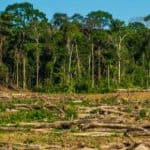Tourism in protected areas generated S/. 2,340 million during 2017.

Tourism activity within Natural Protected Areas (NPAs) generated during 2017 a direct income of S/. 2,340 million to the local economy, as well as more than 36,000 jobs in localities and cities surrounding these areas, revealed the study “The local economic impact of tourism in protected areas of Peru”.
The analysis was based on more than 1,000 field surveys applied to tourists, local businesses and their workers in five natural protected areas, including the Machu Picchu Historic Sanctuary, the Nor Yauyos Cochas Landscape Reserve, and the Tambopata, Pacas and Pacaya Samiria National Reserves, as well as a proposed Regional Conservation Area (Ausangate). This made it possible to achieve a sufficient level of variability in terms of ecosystem, level of tourism development and type of tourist attraction.
Thus, in household income and salaries alone at the local level, this tourism generated 536 million soles and Ausangate, S/29 million. It is important to highlight the latter figure because the study indicates that if an area is declared a PNA, it would increase the number of tourists by between 33% to 100%, so the effect of Ausangate, a Cusco area proposed to be a regional conservation area, would be different. Only the definitive categorization of the area will allow its benefits to be sustainable over time.
These results were extrapolated to 34 NPAs of the National System of Natural Areas Protected by the State (Sinanpe) and it was identified that tourism in this sector generated more than 36,000 jobs in the towns and cities surrounding the NPAs.
The authors of the study point out that the approach was designed to be conservative, including only the initial round of expenditures, and does not capture the full economic effect of tourism on protected areas.
According to José Carlos Rubio, one of the authors, noted that «economies are complex networks of interactions between consumers and producers, in which a tourism dollar circulates through the economy several times, generating an effect greater than the initial dollar. Calculating the full effect in a responsible manner requires information that is not currently available in Peru, so we provide a cautious estimate, only the initial round of tourism spending that remains in the local economy.”.
In the same vein, Fernando León, Vice Minister of Strategic Development of Natural Resources, said that «the results of this study will show the economic impact of natural protected areas as areas of unique scenic beauty and support for tourism, an activity that generates employment, services, and contributes more than S/4 billion annually to Peru's economy. The study has provided us with concrete information to justify the increase in funding for Sinanpe's management”.
Enrique Ortiz, Program Director of the Andes Amazon Fund, the organization that funded this study, concluded that “this study is innovative in its approach. The results, although conservative, show that protected areas not only help safeguard Peru's natural heritage, but also benefit the population and the economy on a very significant scale. The creation of protected areas of different types, and their proper implementation, is good business for everyone and complements Peru's tourism potential”.
Finally, the study provides three specific recommendations for the State based on the above. First, finance the effective management of SINANPE, since a comprehensive financing policy would cost less than 10% of the benefits generated by tourism alone; second, strengthen the participation of businesses within these areas to boost the local economy, ensuring adequate financing for their management; and third, expand the number of current SINANPE areas, especially in zones that include tourist attractions or areas that have the potential to become one.
[You can download the study here].
Sources: Andes Amazon Fund, RPP, Andina, El Comercio


